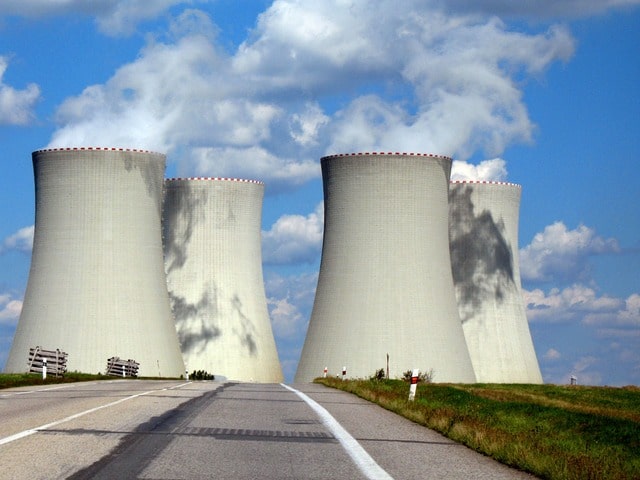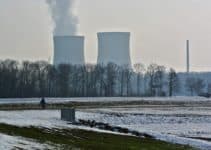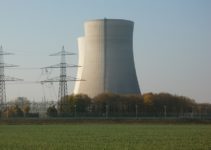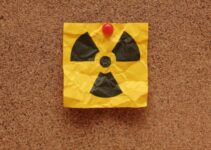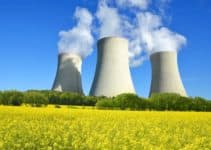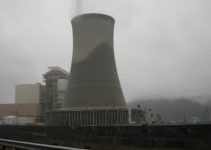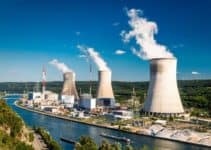The generation of electricity using nuclear energy started way back in the 1940s after the horrendous Second World War. When peace finally prevailed, scientists began researching on how nuclear stockpiles could be turned into useful energy source to get the world back on its feet. The potential of enormously cheap electricity drove many nations to start developing nuclear energy.
The questions that lingered in most people’s minds were: would electricity finally become free? Would nuclear energy be able to power industries, cars, and homes? Although these were hard questions at that time and the consequences of nuclear power were dire, one thing was certain; nuclear energy was the energy for the future. Nuclear energy’s finest hour arrived in the early 1970s when war in the Middle East was rampant. This triggered oil prices to spike. Building up nuclear power plants picked up at a dazzling pace. More nuclear reactors were built between 1970 and 1985, and that’s how proliferation of nuclear power plants came to be.
What is nuclear energy? You ask. Before defining nuclear energy, let’s look at the different substances that stitch together to form an atom, which is the key element in the production of nuclear energy.
An atom, essentially, is the building block of matter. It’s composed of the nucleus, which contains 3 small types of particles known as subatomic particles that include neutrons (have negative electric charge), protons (have positive electoral charge) and electrons (negatively charged particles that revolve around the nucleus). Protons and electrons typically attract each other. The nucleus is held together by energy. A vast quantity of power is contained in an atoms dense nucleus. The amount of protons contained in an atom pretty much determines the physical properties of an element. So, nuclear energy is energy contained in the nucleus, or core of an atom.
Nuclear energy can be utilized to generate electricity. However, it must be released from the atom first. This calls for splitting of the atom. This happens through a process known as nuclear fission where atoms are split to discharge vast quantities of energy.
With the depleting resources and high energy demand the world is looking towards the nuclear energy as its source that is created from the nucleus of an atom. Nuclear energy, as the term says, is released from the very nucleus of an atom. This happens as a result of its mass being converted to energy. Even though nuclear power is safer than burning electricity for fossil fuels, it is still a hazard to our health and the environment.
How Does Nuclear Power Work?
If you look at most traditional energy plants (oil, coal and natural gas), you will find that they depend on a kind of heat generation mechanism, which later creates steam. The steam triggers the turbine to spin, ultimately generating electricity. Nuclear power plants, which are used to produce nuclear energy, work a lot like these traditional energy plants, only the big difference comes in the source of heat. In traditional fossil fuel plants, oil, coal or natural gas is burned to generate the heat. The heat boils waters to produce steam. The steam is directed to turn a turbine, consequently, generating electricity.
On the other hand, the heat source from the nuclear power plants is as a result of the splitting of atoms, a process known as nuclear fission.
Nuclear power is produced through two different processes: Nuclear Fission and Nuclear Fusion.
Nuclear Fission
It is the process of splitting an atom into 2 parts to gives off energy. Splitting an atom can be as a result of natural decay or triggered within a lab. It is a potent source of electricity, but also comes along with a host of political, environmental and safety concerns.
Nuclear fission is the process of releasing the atomic energy by splitting the nucleus thus creating two products of roughly half the mass of the original. A nuclear reactor splits the nuclei of uranium atoms, creating large amounts of energy. This process also creates radioactive waste and radiation, which can contaminate the environment. Nuclear fission is the physical process responsible for all types of power generation, including that used in both nuclear weapons and nuclear power plants.
Nuclear Fusion
Nuclear fusion is the energy source of the future. It is what provides the sun and the stars with the energy to shine continuously for billions of years. Nuclear fusion is when multiple atomic particles join together to create a larger atom. Fusion reactors join hydrogen atoms together to form helium atoms, neutrons and other forms of energy. This is the same type of nuclear energy used in hydrogen bombs. Fusion has been used here on earth to produce nuclear bombs, but has not yet been controlled so that we can obtain useful energy. Unlike nuclear fission, there is no limit on the amount of the fusion that can occur.
What Happens in a Nuclear Reactor?
A nuclear reactor is a chain of machines that are able to control nuclear fission to generate electricity. Nuclear reactors utilize pellets of uranium as a fuel source to generate electricity. Inside a nuclear reactor, uranium atoms are forced to split. In the course of splitting, the atoms give off small particles known as fission products. Fission products trigger off other uranium atoms to break apart, causing a chain reaction. This chain reaction gives off heat.
This heat generated by the nuclear fission process warms the cooling agent (usually water) contained in the nuclear reactor. Other reactors utilize molten salt or liquid metal as cooling agents. The nuclear fission heats the cooling agent to generate steam. The steam is then directed to turn turbines. The turbines power engines or generators, which generate electricity.
The electricity generated can be regulated using rods of materials known as nuclear poison. Nuclear fission reactions produce chemical byproducts, which are absorbed using the nuclear poisons. A classic example of nuclear poison is the chemical element xenon. The chain reactions are supposed to be slower and controlled, which is why more rods of nuclear poison are incorporated. If more electricity is needed, the nuclear poison rods are removed, instigating a stronger chain reaction.
Statistically, approximately 15% of the entire global electricity is produced by nuclear power plants, with the U.S. leading the way with over 100 reactors. However, fossils fuels and hydroelectric energy still dominate United State’s electricity generation. States like France, Slovakia and Lithuania still generate a greater percentage of their electricity from nuclear power plants.
What are the Various Problems With Nuclear Power?
Although nuclear power has been proven to produce vast amounts of power, it comes with its own advantages and disadvantages. It has been validated to be eco-friendly energy resource since it produces energy without emitting greenhouse gasses into the atmosphere. Some of the problems associated with nuclear power include:
Meltdown of nuclear reactor
A nuclear meltdown is a situation where intense overheating of the nuclear reactor leads to melting of the core of the reactor. If a glitch in the reactor’s cooling system takes place, it could let one or more nuclear fuel elements to go above its melting point resulting in a meltdown. A meltdown could significantly disseminate dangerous radioactive materials into the environment.
Effects on human health
Every single day, humans are naturally exposed to radiation emanating from the sun rays and medical procedures like X-rays, CT scans, or nuclear medicines like MRI that use a wide range of radiation to diagnose and treat health complications. This low radiation exposure from the sun and medical procedures does not have major impacts on human health. However, exposure to high levels of radiation over time leads to damage of body cells, which could cause cancer. Equally, an acute dose of high-level radiation leads to radiation sickness, an ailment brought about by high-level exposure to radiation over a short period. A radiation sickness sufferer will manifest symptoms like hair loss, vomiting, skin burns, diarrhea, nausea and possibly death.
Environmental health concerns have been raised regarding nuclear power generation. These plants use water sourced from rivers and lakes for their cooling systems. This water is normally used to dispel heat and once used; it’s allowed to flow back to the river or lake at relatively high temperature. This water comes along with heavy metals and salts. Combined with high temperature, these heavy metals and salts can wipe out fish and plant life in the river and lake ecosystems.
Safety concerns
After the 9/11 attacks, governments were concerned that terrorists could set their eyes on nuclear plants to release radioactive material. Although there are no authentic studies pointing out how a nuclear reactor could endure a terror attack, it’s worthwhile to understand that the containment walls around the reactor are characteristically constructed with an inner steel lining that’s wrapped in a 2 to 5 feet or fortified concrete. These power plants are specially constructed to resist the effects of earthquakes, small planes, tornadoes, and hurricanes.
Disposal of radioactive waste
Disposal of radioactive waste produced during nuclear fission is considered the biggest logistical challenge that comes along with a radioactive power plant. The reason is that these radioactive wastes are practically impossible to dispose of using traditional methods since some kinds like spent nuclear fuel rods, stay active for hundreds if not thousands of years. This brings about a huge challenge regarding disposal.
The Future of Nuclear Power
Nuclear energy is a powerful force. Attempts have been made to find other constructive ways of harnessing it. Nuclear power is an important source of energy in many countries. 442 nuclear reactors are now operating worldwide with a total capacity of 300,000 MW as of year 2014. Two and a half times this number will be added by 2030 and four times as many by 2050, says the International Atomic Energy Agency (IAEA), the bastion of the global nuclear community.
Higher oil and gas prices make alternatives such as nuclear power more attractive and are expected to lead to growth in nuclear generating capacity worldwide. Improvements in reactor design enhance safety, increase efficiency, and reduce costs, making nuclear generation an economically attractive source of energy. Many countries, including the UK, have recently affirmed their intention to continue their use of nuclear energy for electricity generation, and although this decision has been condemned by anti-nuclear pressure groups, all the indications are that nuclear power will continue to be an important source of energy for us for a long time to come.
Environmental concerns about the disposal of spent nuclear fuel persist, and countries are addressing those concerns in different ways. The US is developing a disposal facility on government property, but this solution is itself controversial.
